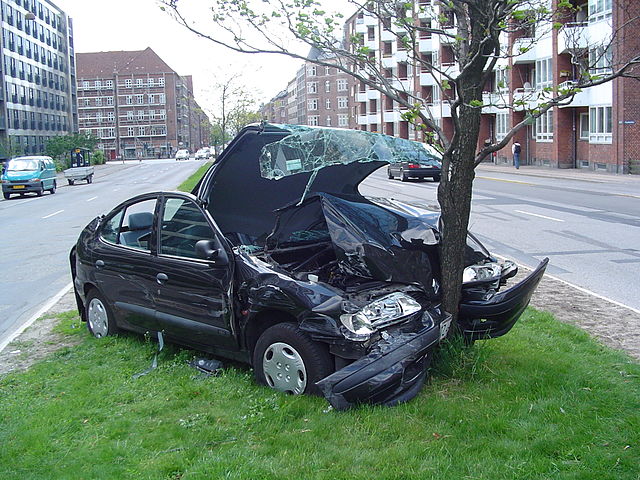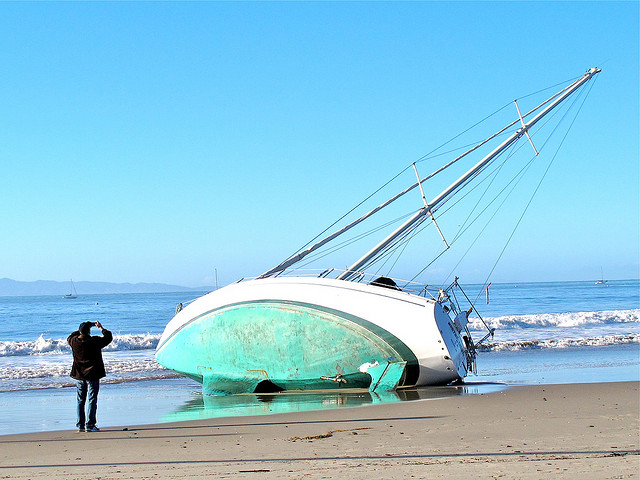Archive for the ‘How To’ Category
Can It Grow?
 If you’re working in a company you like, and you want it to be around in the future, you want to know if it will grow. If you’re looking to move to a new company, you want to know if it has legs – you want to know if it will grow. If you own stock, you want to know if the company will grow, and it’s the same if you want to buy stock. And it’s certainly the case if you want to buy the whole company – if it can grow, it’s worth more.
If you’re working in a company you like, and you want it to be around in the future, you want to know if it will grow. If you’re looking to move to a new company, you want to know if it has legs – you want to know if it will grow. If you own stock, you want to know if the company will grow, and it’s the same if you want to buy stock. And it’s certainly the case if you want to buy the whole company – if it can grow, it’s worth more.
To grow, a company has to differentiate itself from its competitors. In the past, continuous improvement (CI) was a differentiator, but today CI is the minimum expectation, the cost of doing business. The differentiator for growth is discontinuous improvement (DI).
With DI, there’s an unhealthy fascination with idea generation. While idea generation is important, companies aren’t short on ideas, they’re short on execution. But the one DI differentiator is the flavor of the ideas. To do DI a company needs ideas that are radically different than the ones they’re selling now. If the ideas are slightly twisted variants of today’s products and business models, that’s a sure sign continuous improvement has infiltrated and polluted the growth engine. The gears of the DI engine are gummed up and there’s no way the company can sustain growth. For objective evidence the company has the chops to generate the right ideas, look for a process that forces their thinking from the familiar, something like Jeffrey Baumgartner’s Anticonventional Thinking (ACT).
For DI-driven growth, the ability to execute is most important. With execution, the first differentiator is how the company investigates radically new ideas. There are three differentiators – a focus on speed, a “market first” approach, and the use of minimum viable tests (MVTs). With new ideas, it’s all about how fast you can learn, so speed should come through loud and clear. Without a market, the best idea is worthless, so look for “market first” thinking. Idea evaluation starts with a hypothesis that a specific market exists (the market is clearly defined in the hypothesis) which is evaluated with a minimum viable test (MVT) to prove or disprove the market’s existence. MVTs should error on the side of speed – small, localized testing. The more familiar minimum viable product (MVP) is often an important part of the market evaluation work. It’s all about learning about the market as fast as possible.
Now, with a validated market, the differentiator is how fast company can rally around the radically new idea and start the technology and product work. The companies that can’t execute slot the new project at the end of their queue and get to it when they get to it. The ones that can execute stop an existing (lower value) project and start the new project yesterday. This stop-to-start behavior is a huge differentiator.
The company’s that can’t execute take a ready-fire-aim approach – they just start. The companies that differentiate themselves use systems thinking to identify gaps in resources and capabilities and close them. They do the tough work of prioritizing one project over another and fully staff the important ones at the expense of the lesser projects. Rather than starting three projects and finishing none, the companies that know how to do DI start one, finish one, and repeat. They know with DI, there’s no partial credit for a project that’s half done.
All companies have growth plans, and at the highest level they all hang together, but some growth plans are better than others. To judge the goodness of the growth plan takes a deeper look, a look into the work itself. And once you know about the work, the real differentiator is whether the company has the chops to execute it.
Image credit – John Leach.
The Safest Bet Is Far Too Risky
 It’s harder than ever to innovate, and getting harder.
It’s harder than ever to innovate, and getting harder.
The focus on growth can be empowering, but when coupled with signed-in-blood accountability, empowering turns to puckering. It’s an unfair double-bind. Damned if you try something new and it doesn’t work, and damned if you stay the course and don’t hit the numbers. The most popular approach seems to be to do more of what worked. A good approach, but not as good as it’s made out to be.
Doing more of what worked is good, and it works. But it can’t stand on its own. With today’s unreasonable workloads, every resource is fully booked and before doing more of anything, you’ve got to do less of something else. ‘More of what worked’ must walk hand-in-hand with ‘Stop what didn’t work.’ Without stopping, without freeing up resources, ‘more of what worked’ is insufficient and unsustainable.
But even the two together are insufficient, and there’s a much needed third leg to stabilize the stool – ‘starting new work.’ Resources freed by stopping are allocated to starting new work, and this work, also known as innovation, is the major source of growth.
‘More of what worked’ is all about productivity – doing more with the same resources; and so is ‘stopping what didn’t work’ – reclaiming and reallocating ineffective resources. Both are important, but more importantly – they’re not innovation.
As you’re well aware, the rules are changing faster than ever, and at some point what worked last year won’t work this year. The only way to stay ahead of a catastrophe is to make small bets in unproven areas. If the bets are successful, they turn into profitable innovation and growth. But the real value is the resiliency that comes from the ritualistic testing/learning cycles.
Going all-in on what worked last year is one of the riskiest bets you can make.
The Importance Of Knowing Why You’re In The Boat
Whether at work or home, there are highs and lows. And you’re not getting special treatment, that’s how it is for everyone. And it’s a powerful fundamental, so don’t try to control it, ride it.
When the sailing is smooth, at some point it won’t be – the winds change, that’s what they do. And when you’re suddenly buffeted from a new direction, you take action. But what action? More sail or less? Port or starboard? Heave the anchor or abandon ship? It depends.
Your actions depend on your why. Regardless of wind or tide, your why points where it points and guides your actions. Much like magnetic north doesn’t move if you spin your compass, your long term why knows where it points. If the storm on the horizon is dead ahead, you go around it. But it’s a balance – deviate to skirt the storm, but do it with your long term destination in mind. If you know your long term why, the best course heading is clear.
Often you set sail without realizing you don’t have your why battened down and stowed. When you sail where you sailed last time, you know the landmarks and use them to navigate. You can unknowingly leave your why at the pier and still get to your destination. But when you’re blown out to sea and can no longer see the landmarks, your moral compass, your long term why, is the only way to tack and jibe toward your destination.
Before you set sail, it’s best to know why you’re in the boat.
Bridging The Chasm Between Technologists and Marketers
 What’s a new market worth without a new technology to capture it? The same as a new technology without a new market – not much. Technology and market are a matched set, but not like peanut butter and jelly, (With enough milk, a peanut butter sandwich isn’t bad.) rather, more like H2 and O: whether it’s H2 without O or O without H2 – there’s no water. With technology and market, there’s no partial credit – there’s nothing without both.
What’s a new market worth without a new technology to capture it? The same as a new technology without a new market – not much. Technology and market are a matched set, but not like peanut butter and jelly, (With enough milk, a peanut butter sandwich isn’t bad.) rather, more like H2 and O: whether it’s H2 without O or O without H2 – there’s no water. With technology and market, there’s no partial credit – there’s nothing without both.
You’d think with such a tight coupling, market and technology would be highly coordinated, but that’s not the case. There’s a deep organizational chasm between them. But worse, each has their own language, tools, and processes. Plain and simple, the two organizations don’t know how to talk to each other, and the result is the wrong technology for the right market (if you’re a marketer) or the right technology for the wrong market (if you’re a technologist.) Both ways, customers suffer and so do business results.
The biggest difference, however, is around customers. Where marketers pull, technologists push – can’t be more different than that. But neither is right, both are. There’s no sense arguing which is more important, which is right, or which worked better last time because you need both. No partial credit.
If you speak only French and have a meeting with someone who speaks only Portuguese, well, that’s like meeting between marketers and technologists. Both are busy as can be, and neither knows what the other is doing. There’s a huge need for translators – marketers that speak technologist and technologists that talk marketing. But how to develop them?
The first step is to develop a common understanding of why. Why do you want to develop the new market? Why hasn’t anyone been able to create the new market? Why can’t we develop a new technology to make it happen? It’s a good start when both sides have a common understanding of the whys.
To transcend the language barrier, don’t use words, use video. To help technologists understand unmet customer needs, show them a video of a real customer in action, a real customer with a real problem. No words, no sales pitch, just show the video. (Put your hand over your mouth if you have to.) Show them how the work is done, and straight away they’ll scurry to the lab and create the right new technologies to help you crack the new market. Technologists don’t believe marketers; technologists believe their own eyes, so let them.
To help marketers understand technology, don’t use words, use live demos. Technologists – set up a live demo to show what the technology can do. Put the marketer in front of the technology and let them drive, but you can’t tell them how to drive. You too must put your hand over your mouth. Let them understand it the way they want to understand it, the way a customer would understand it. They won’t use it the way you think they should, they’ll use it like a customer. Marketers don’t understand technology, they understand their own eyes, so let them.
And after the videos and the live demos, it’s time to agree on a customer surrogate. The customer surrogate usually takes the form of a fully defined test protocol and fully defined test results. And when done well, the surrogate generates test results that correlate with goodness needed to crack the new market. As the surrogate’s test results increase, so does goodness (as the customer defines it.) Instead of using words to agree on what the new technology must do, agreement is grounded in a well defined test protocol and a clear, repeatable set of test results. Everyone can use their eyes to watch the actual hardware being tested and see the actual test results. No words.
To close the loop and determine if everyone is on the same page, ask the marketers and technologist to co-create the marketing brochure for the new product. Since the brochure is written for the customer, it forces the team use plain language which can be understood by all. No marketing jargon or engineering speak – just plain language.
And now, with the marketing brochure written, it’s time to start creating the right new market and the right new technology.
Photo credit – TORLEY.
Incomplete Definition – A Way Of Life
 At the start of projects, no one knows what to do. Engineering complains the specification isn’t fully defined so they cannot start, and marketing returns fire with their complaint – they don’t yet fully understand the customer needs, can’t lock down the product requirements, and need more time. Marketing wants to keep things flexible and engineering wants to lock things down; and the result is a lot of thrashing and flailing and not nearly enough starting.
At the start of projects, no one knows what to do. Engineering complains the specification isn’t fully defined so they cannot start, and marketing returns fire with their complaint – they don’t yet fully understand the customer needs, can’t lock down the product requirements, and need more time. Marketing wants to keep things flexible and engineering wants to lock things down; and the result is a lot of thrashing and flailing and not nearly enough starting.
Both camps are right – the spec is only partially formed and customer needs are only partially understood – but the project must start anyway. But the situation isn’t as bad as it seems. At the start of a project fully wrung out specs and fully validated customer needs aren’t needed. What’s needed is definition of product attributes that set its character, definition of how those attributes will be measured, and definition of the competitive products. The actual values of the performance attributes aren’t needed, just their name, their relative magnitude expressed as percent improvement, and how they’ll be measured.
And to do this the project manager asks the engineering and marketing groups to work together to create simple bar charts for the most important product attributes and then schedules the meeting where the group jointly presents their single set of bar charts.
This little trick is more powerful than it seems. In order to choose competitive products, a high level characterization of the product must be roughed out; and once chosen they paint a picture of the landscape and set the context for the new product. And in order to choose the most important performance (or design) attributes, there must be convergence on why customers will buy it; and once chosen they set the context for the required design work.
Here’s an example. Audi wants to start developing a new car. The marketing-engineering team is tasked to identify the competitive products. If the competitive products are BMW 7 series, Mercedes S class, and the new monster Hyundai, the character of the new car and the character of the project are pretty clear. If the competitive products are Ford Focus, Fiat F500, and Mini Cooper, that’s a different project altogether. For both projects the team doesn’t know every specification, but it knows enough to start. And once the competitive products are defined, the key performance attributes can be selected rather easily.
But the last part is the hardest – to define how the performance characteristics will be measured, right down to the test protocols and test equipment. For the new Audi fuel economy will be measured using both the European and North American drive cycles and measured in liters per 100 kilometer and miles per gallon (using a pre-defined fuel with an 89 octane rating); interior noise will be measured in six defined locations using sound meter XYZ and expressed in decibels; and overall performance will be measured by the lap time around the Nuremburg Ring under full daylight, dry conditions, and 25 Centigrade ambient temperature, measured in minutes.
Bar charts are created with the names of the competitive vehicles (and the new Audi) below each bar and performance attribute (and units, e.g., miles per gallon) on the right. Side-by-side, it’s pretty clear how the new car must perform. Though the exact number is not know, there’s enough to get started.
At the start of a project the objective is to make sure you’re focusing on the most performance attributes and to create clarity on how the attributes (and therefore the product) will be measured. There’s nothing worse than spending engineering resources in the wrong area. And it’s doubly bad if your misplaced efforts actually create constraints that limit or reduce performance of the most important attributes. And that’s what’s to be avoided.
As the project progresses, marketing converges on a detailed understanding of customer needs, and engineering converges on a complete set of specifications. But at the start, everything is incomplete and no part of the project is completely nailed down.
The trick is to define the most important things as clearly as possible, and start.
Starvation, Pressure, and Perspective Shift
I like Dave Snowden’s thinking on innovation – starvation, pressure, and perspective shift. Here’s what it means to me:
Starvation – Left to our own, we’ll do as we did before. Starvation of resources pushes thinking away from stale, worn paths. Almost in reverse, define what you don’t want, then construct intelligent constraints (the most difficult part of the whole deal) so it’s out of the design space. Constrain the team so they can’t use the most expensive material; constrain the team so they can’t use the same old technology; constrain them so they can’t use the tried and true business model. It’s reverse thinking, but constraints – telling them what they can’t do – frees up design space. Constraints say “Do anything you want, except this.” which constrains far less than specifications. Constrain them to free them.
Pressure – Left to our own, we’ll reuse old thinking. Time pressure drags thinking out of the ruts of our success. Define creative constraints then, to create pressure, give the team insufficient time to think it through. Force them to swim differently with the problem. The best way I know is to explain the constraints then give the team fifteen minutes to build a prototype. (Yes, fifteen.) The prototype is non-functional, and can be made from whatever is on hand – cardboard, clay, duct tape, or packing peanuts. The short time frame creates pressure, and the pressure extrudes different thinking. Building a prototype shifts from learning-in-the-brain to learning-with-the-hands. And since hands learn differently than brains, new thinking is cast.
Perspective Shift – Left to our own, we’ll do a remake. Perspective shift moves us to a different place to create a healthy disrespect for today’s thinking. Seen in the right new light, our successes should look problematic. (From the front a skunk isn’t so bad, but from behind things aren’t so good.) Building a bridge to a new perspective can shift things a little, but for a tectonic shift, formalize the consequences of inaction. Think – “If we don’t do this, a very bad thing will happen.” Perspective shift is all about creating action in a new direction.
You won’t get it right the first time, but, no matter. The real enemy is inaction.
Hearts Before Minds
 We often forget, but regardless of industry, technology, product, or service, it’s a battle for hearts and minds.
We often forget, but regardless of industry, technology, product, or service, it’s a battle for hearts and minds.
The building blocks of business are processes, machines, software, and computers, but people are the underpinning. The building blocks respond in a repeatable way – same input, same output – and without judgment. People, however, not so much.
People respond differently depending on delivery – even small nuances can alter the response, and when hot buttons are pushed responses can be highly nonlinear. One day to the next, people’s responses to similar input can be markedly different. Yet we forget people are not like software or machines, and we go about our work with expectations people will respond with highly rational, highly linear, A-then-B logic. But in a battle between rational and emotional, it’s emotional by a landslide.
Thankfully, we’re not just cogs in the machine. But for the machine to run, it’s imperative to win the hearts and minds. (I feel a little silly writing this because it’s so fundamental, but it needs to be written.) And it’s hearts then minds. The heart is won by emotion, and once the emotional connection is made, the heart tells the mind to look at the situation and construct logic to fit. The heart clears the path so the mind can in good conscience come along for the ride.
Hearts are best won face-to-face, but, unfortunately today’s default mode is PowerPoint-to-face. We don’t have to like it, but it’s here to stay. And so, we must learn to win hearts, to make an emotional connection, to tell stories with PowerPoint.
To tell a story with PowerPoint, we must bring ourselves to the forefront and send PowerPoint to the back. To prevent ourselves from hiding behind our slides, take the words off and replace them with a single, large image – instead of a complex word-stuffed jumble, think framed artwork. While their faces look at the picture, tell their hearts a story. Eliminate words from the slides and the story emerges.
[There’s still a place for words, but limit yourself to three words per slide, and make them big – 60 point font. And keep it under ten slides. More than that and you haven’t distilled the story in your head.]
Whatever business you’re in, you’re in the people business. Win hearts and minds follow. And so do profits.
There Are No Best Practices
 That’s a best practice. Look, there’s another one. We need a best practice. What’s the best practice? Let’s standardize on the best practice. Arrrgh. Enough, already, with best practices.
That’s a best practice. Look, there’s another one. We need a best practice. What’s the best practice? Let’s standardize on the best practice. Arrrgh. Enough, already, with best practices.
There are no best practices, only actions that have worked for others in other situations. Yet we feverishly seek them out, apply them out of context, and expect they’ll solve a problem unrelated to their heritage.
To me, the right practices are today’s practices. They’re the base camp from which to start a journey toward new ones. To create the next evolution of today’s practices, for new practices to emerge, a destination must be defined. This destination is dictated by problems with what we do today. Ultimately, at the highest level, problems with our practices are spawned by gaps, shortfalls, or problems in meeting company objectives. Define the shortfall – 15% increase in profits – and emergent practices naturally diffuse to the surface.
There are two choices: choose someone else’s best practices and twist, prune, and bend them to fit, or define the incremental functionality you’d like to create and lay out the activities (practices) to make it happen. Either way, the key is starting with the problem.
The important part – the right practices, the new activities, the novel work, whatever you call it, emerges from the need.
It’s a problem hierarchy, a problem flow-down. The company starts by declaring a problem – profits must increase by 15% – and the drill-down occurs until a set of new action (new behaviors, new processes, new activities) is defined that solves the low level problems. And when the low level problems are solved, the benefits avalanche to satisfy the declared problem – profits increased by 15%.
It’s all about clarity — clearly define the starting point, clearly define the destination, and express the gaps in a single page, picture-based problem statements. With this type of problem definition, you can put your hand over your mouth, with the other hand point to the picture, and everyone understands it the same way. No words, just understanding.
And once everyone understands things clearly, the right next steps (new practices) emerge.
Error Doesn’t Matter, Trial Does
 If you want to learn, to really learn, experiment.
If you want to learn, to really learn, experiment.
But I’m not talking about elaborate experiments; I’m talking about crude ones. Not simple ones, crude ones.
We were taught the best experiments maximize learning, but that’s dead wrong. The best experiments are fast, and the best way to be fast is to minimize the investment.
In the name of speed, don’t maximize learning, minimize the investment.
Let’s get right to it. One of the best tricks to minimize investment is to minimize learning – learning per experiment, that is. Define learning narrowly, design the minimum experiment, and run the trial. Learning per trial is low, but learning per month skyrockets because the number of trials per month skyrockets. But it gets better. There’s an interesting learning exponential at work. The first trial informs the second which shapes the third. But instead of three units of learning, it’s cubic. And minimizing learning doesn’t just half the time to run a trial, it reduces it by 100 or more. It’s earning to the hundredth power.
Another way to minimize investment is to minimize resolution. Don’t think nanometers, think thumbs up, thumbs down. Design the trial so the coarsest measuring stick gives an immediate and unambiguous response. There’s no investment in expensive measurement gear and no time invested in interpretation of results. Think sledgehammer to the forehead.
A third way to minimize investment is to evaluate relative differences. The best example is the simple, yet powerful, A-B test . Run two configurations, decide which is better, and run quickly in the direction of goodness. No need to fret about how much better, just sprint toward it. The same goes for trial 1 versus trial 2 comparisons. Here’s the tricky algorithm: If trial 2 is better, do more of that. And the good news applies here too – the learning exponential is still in play. Better to the hundredth power, in record time.
I don’t care what norms you have to bend or what rules you have to break. If you do one thing, run more trials.
But don’t take my word for it. Dr. Seuss had it right:
And I would run them in a boat!
And I would run them with a goat…
And I will run them in the rain.
And in the dark. And on a train.
And in a car. And in a tree.
They are so good so good you see!
How Engineers Create New Markets
 When engineers see a big opportunity, we want desperately to move the company in the direction of our thinking, but find it difficult to change the behavior of others. Our method of choice is usually a full frontal assault, explaining to anyone that will listen the opportunity as we understand it. Our approach is straightforward and ineffective. Our descriptions are long, convoluted, complicated, we use confusing technical language all our own, and omit much needed context that we expect others should know. The result – no one understands what we’re talking about and we don’t get the behavior we’re looking for (immediate company realignment with what we know to be true). Then, we get frustrated and shut down – opportunity lost.
When engineers see a big opportunity, we want desperately to move the company in the direction of our thinking, but find it difficult to change the behavior of others. Our method of choice is usually a full frontal assault, explaining to anyone that will listen the opportunity as we understand it. Our approach is straightforward and ineffective. Our descriptions are long, convoluted, complicated, we use confusing technical language all our own, and omit much needed context that we expect others should know. The result – no one understands what we’re talking about and we don’t get the behavior we’re looking for (immediate company realignment with what we know to be true). Then, we get frustrated and shut down – opportunity lost.
To change the behavior of others, we must first change our own. As engineers we see problems which, when solved, result in opportunity. And if we’re to be successful, we must go back to the problem domain and set things straight. Here’s a sequence of new behaviors we as engineers can take to improve our chances of changing the behavior of others:
Step 1. Create a block diagram of the physical system using simple nouns (blocks) and verbs (arrows). Blue arrows are good (useful actions) and red arrows are bad (harmful actions). Here’s a link to a PowerPoint file with a live template to create your own.
Step 2. Reduce the system block diagram down to its essence to create a distilled block diagram of the problem, showing only the system elements (blocks) with the problem (red arrow).For a live template, see the second page of the linked file. [Note – if there are two red arrows in the system block diagram, there are two problems which must be solved separately. Break them into two and solve the first one first. For an example, see page three of the linked file.]
Step 3. Create a hand sketch, or cartoon, showing the two system elements (blocks) of the distilled block diagram from step 2. Zoom in so only the two elements are visible, and denote where they touch (where the problem is), in red. For an example, see page four of the linked file.
Step 4. Now that you understand the real problem, use Google to learn how others have solved it.
Step 5. Choose one of Google’s most promising solutions and prototype it. (Don’t ask anyone, just build it.)
Step 6. Show the results to your engineering friends. If the problem is solved, it’s now clear how the opportunity can be realized. (There’s a big difference between a crazy engineer with a radically new market opportunity and a crazy engineer with test results demonstrating a new technology that will create a whole new market.)
Step 7. If the problem is not solved, or you solved the wrong problem, go back to step 1 and refine the problem
With step 1 you’ll find you really don’t understand the physical system, you don’t know which elements of the system have the problem, and you can’t figure out what the problem is. (I’ve created complicated system block diagrams only to realize there was no problem.)
With step 2, you’ll continue to struggle to zoom in on the problem. And, likely, as you try to define the problem, you’ll go back to step 1 and refine the system block diagram. Then, you’ll struggle to distill the problem down to two blocks (system elements). You’ll want to retain the complexity (many blocks) because you still don’t understand the real problem.
If you’ve done step 2 correctly, step 3 is easy, though you’ll still want to complicate the cartoon (too many system elements) and you won’t zoom in close enough.
Step 4 is powerful. Google can quickly and inexpensively help you see how the world has already solved your problem.
Step 5 is more powerful still.
Step 6 shows Marketing what the future product will do so they can figure out how to create the new market.
Step 7 is how problems are really solved and opportunities actually realized.
When you solve the real problem, you create real opportunities.
Forgotten Pillars of Personal Growth
 There are a lot of complex self-help programs out there to help us reach our potential. These programs are designed to take us to the next level by building on what we have. And they do help. But implicitly the programs assume we’ve got a foundation in place and it’s solid enough to stand on. But I think our foundation is rickety.
There are a lot of complex self-help programs out there to help us reach our potential. These programs are designed to take us to the next level by building on what we have. And they do help. But implicitly the programs assume we’ve got a foundation in place and it’s solid enough to stand on. But I think our foundation is rickety.
To be what we must be is our responsibility, and if we’re going to get any value from our self-help programs it’s our responsibility to establish the conditions for growth.
Here are three forgotten pillars that must be in place if we’re to grow:
Good sleep habits – most of us our sleep deprived, yet the data is clear that a rested brain thinks better. If we’re to grow, we’ve got to think better, and to think better we need more rest.
Good eating habits – most of us eat poorly. We eat too much which hurts our bodies and we eat too infrequently which hurts our brains. We all know our muscles need calories or they don’t work well, but what we forget is our brain also needs calories. (It’s 2% of our weight but consumes about 20% of our total calories.) And when we eat infrequently our blood sugar drops and so does our brains’ ability to think. If we’re to grow, we need to eat better.
Good fitness habits – most of us don’t exercise daily. Our brain is connected to our body, and they interact. When the muscles are exercised they cause the brain to make chemicals that sooth and calm. When we exercise we have a better attitude, have more stamina, and think better. If we’re to grow, we need more exercise.
The big three are far more powerful than the best self-help scheme, but they’re also far scarier. They’re so scary because they’re easy to measure and completely within our control.
After a one month trial you’ll know if you’ve slept more, worked out more, and ate better. And if you haven’t, you’ll also know who is responsible.


 Mike Shipulski
Mike Shipulski